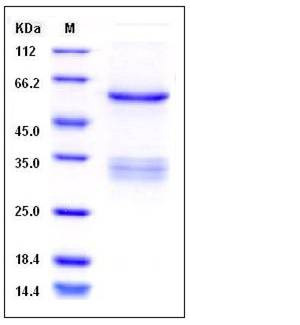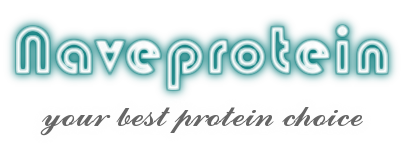Human SUV420H2 Protein (His & GST Tag)
KMT5C
- 100ug (NPP4298) Please inquiry
| Catalog Number | P11971-H20E |
|---|---|
| Organism Species | Human |
| Host | E. coli |
| Synonyms | KMT5C |
| Molecular Weight | The recombinant human SUV420H2/GST chimera consists of 516 amino acids and has a calculated molecular mass of 60 kDa as estimated in SDS-PAGE under reducing conditions. |
| predicted N | Met |
| SDS-PAGE |  |
| Purity | > 80 % as determined by SDS-PAGE |
| Protein Construction | A DNA sequence encoding the amino acid sequence (Gly 2-Leu 280) of human SUV420H2 (NP_116090.2) was fused with the N-terminal polyhistidine-tagged GST tag at the N-terminus. |
| Bio-activity | |
| Research Area | Epigenetics |Histone Modifying Enzymes |Methylation and Demethylation |Histone methylation |
| Formulation | Lyophilized from sterile 50mM Tris, 0.5M NaCl, 30% Glycerol, 0.05% Teween, pH 8.0 1. Normally 5 % - 8 % trehalose, mannitol and 0.01% Tween80 are added as protectants before lyophilization. Specific concentrations are included in the hardcopy of COA. |
| Background | Histone-lysine N-methyltransferase SUV420H2, also known as Suppressor of variegation 4-20 homolog 2, Su(var)4-20 homolog 2, Lysine N-methyltransferase 5C, SUV420H2 and KMT5C, is nucleus protein which belongs to the histone-lysine methyltransferase family and Suvar4-20 subfamily. SUV420H2 is a histone methyltransferase that specifically trimethylates 'Lys-20' of histone H4. H4 'Lys-20' trimethylation represents a specific tag for epigenetic transcriptional repression. SUV420H2 mainly functions in pericentric heterochromatin regions, thereby playing a central role in the establishment of constitutive heterochromatin in these regions. SUV420H1 is targeted to histone H3 via its interaction with RB1 family proteins (RB1, RBL1 and RBL2). FRAP experiments reveal that SUV420H2 is strongly associated to pericentric heterochromatin. The fraction of SUV420H2 captured and characterized by TAP/MS is a soluble fraction which may be in a stable association with HP1. SUV420H2 may be recruited to heterochromatin in association with HP1, and stably maintained at its heterochromatin sites in an HP1-independent fashion. |
| Reference |
